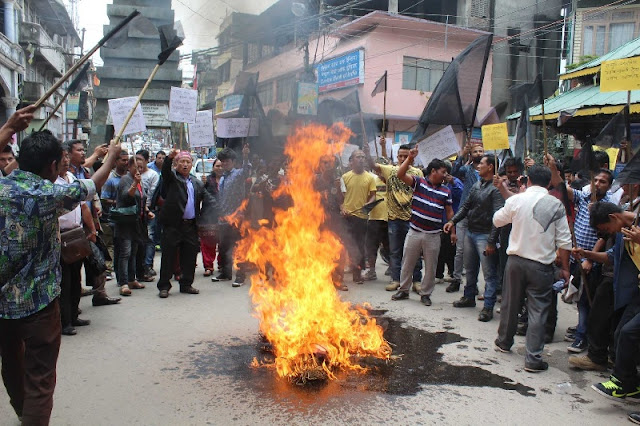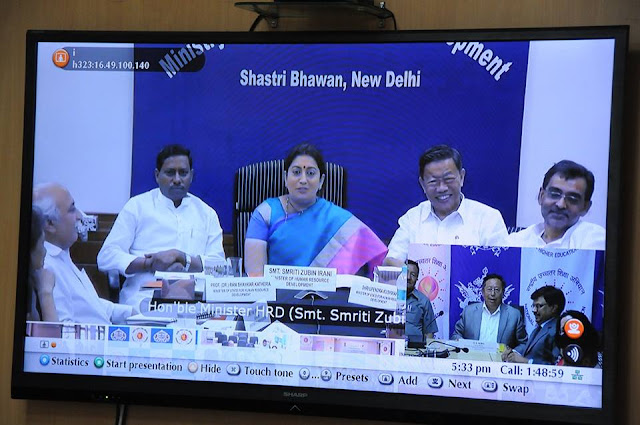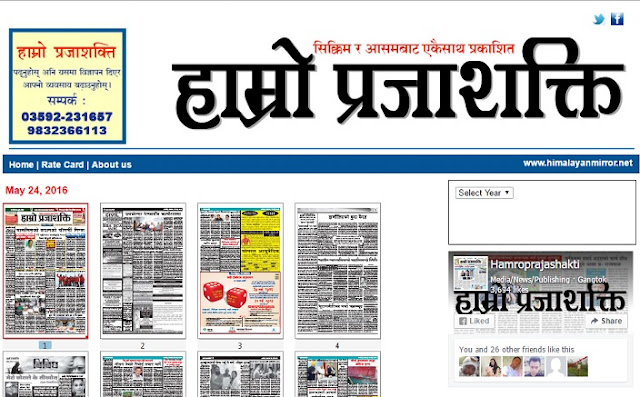Writes: Diki Sherpa
[It was said that ,someday in 1940’s A wealthy man , to be specific the director of Rolex watches desired to know this place called “kalimpong” from where such an unusual high amount of Rolex watches is demanded. When the man finally arrived in Kalimpong he was rather stunned to find out the fact that kalimpong was no more than just a small chaotic trade village in the eastern Himalayas.]
In this article I had attempted to explore the distant past of kalimpong, when it was thriving under caravan trade across the Indo-Tibetan border. In this process it not only became a centre for economic enterprise but also emerged as an important converging point of people, ideas and legacies transcending their territories to produce kalimpong as a dynamic urban locale in the early twentieth century.
It all began in 1904, after the so called colonel Younghusband’s expedition to Lhasa. At this point, commerce across the Himalayas was just a mere political expression to safeguard the imperial interest. To facilitate the commerce in the region Jelepla was preferred as a principle route linking the British Empire directly with Lhasa, as the treacherous topography of Nathula did not allow the smooth mobility. Kalimpong located right in the middle of Indo-Tibetan trade route, was a point of transit- trade, replacing Kathmandu as an entrepot for the long distance trade. The goods were received in this entrepot until they were re-exported, primarily to breakdown the burden of long distance trade by single agency. Charles Bell, the British representative in Tibet notes that – “The most important of all the trade routes between India and Tibet takes off from the kalimpong in the dist. Of Darjeeling crossing south eastern Sikkim and enters the Chumbi valley by the Jelepla.” Places such as this witnessed the colossal political and economic changes over the period of time and also primarily owed their importance or rather existence to the caravan trade across the border. Trading practice and the growth of town is “incremental” and “symbiotic”, this processes cannot be seen in isolation. Kalimpong which acted as an entrepot for the Indo- Tibetan trade in the first half of the 20th century was one of such town, where trade was the very raison d’être for its growth. Commodities like woolen and cotton piece goods ,iron ,steel ,brass and copper sheets and wares, stationary ,sugar , gur, dried fruits ,dyes ,chemical ,kerosene ,candles ,lantern ,electronic torches and batteries ,brick tea , aluminum ware , porcelain ,cement ,leather goods ,cigarettes , leaf tobacco and pharmaceutical goods was sent to Tibet in exchange of musk, wool ,yaks tail, silver, gold. As often said by the locals, “almost everything” was carried to Tibet. From Tibet the raw wool constituted the 90 percent of the Tibet’s annual export to India, which in turn some of them find their way to the Indian mills and the remaining was re-exported to Liverpool and America.
 |
| Kalimpong, a centre of convergence: trade, town and people |
Almost seven years since the trade started, the landscape of the area started to change. To increase the efficiency of the goods circulation, the overland traffic was mechanized, half way though. Teesta valley extension of the Darjeeling Himalayan railway was completed upto Gaillekhola (12 miles from kalimpong) and opened for traffic in 1915. The considerable effort was put to improve the cart road from Teesta bazaar to kalimpong. This “annihilation of space and time” to ensure the increased mobility of goods was directly set against the dire consequence of toiling lives of many. Considering the mountain ecologies, road construction across the asymmetrical hilly terrain presented various Ecological challenges and sometimes even cost lives. All these painstaking hard work of subalterns helped kalimpong at last to gradually glide towards urbanization. Thanks to their dreadful labor, it was no longer oblivion to the social economic and political development that was taking place beyond Teesta.
The rural setting of the was not a hindrance to the business minded individuals; it was trade all that matter. The rural setting began to get transfer and got a further impetus when Rev. J.A graham proposed to develop a Kalimpong into a town. Hence in 1916 it was declared as subdivision basically as a precondition to develop it as a town. While describing Kalimpong as a hill town, it is intriguing to point out that ,it did not presented a prototype of romantic English country home away from congestion of cities and politics of Indian plains. It certainly lacked the typical hill station characteristics like others in the eastern Himalayan or may be in the India. It did not offer a cool climate like that of neighboring
Darjeeling to develop it as a sanatorium or as a seasonal retreat with their colonial social life, gaiety and style. Moreover, even the educational institution that was established did not show any parity with the institution of neighboring hill station. The most prominent educational establishment in the region was St. Andrews colonial homes(1900) which was situated on an estate of 611 acres . The main object behind the establishment was to provide for children wholly or partly of British or other European descent, such an education and training based upon protestant principle, as many fit then for emigration to British colony or for suitable work elsewhere. Other institutions were primarily targeted to train and educate the natives of the region .In 1925 Himalayan hotel was built, the only European establishment of David McDonald to cater the European and British visitors. The total no. of European in 1941 was 529 out of total 11,958 people in town. Therefore it can certainly be said that kalimpong was not a so called favored resort of recreation. It was truly a place set aside for trade and commerce thriving with activity filled with seasonal bustling of the mule caravans to and from the Tibet.
Not so long, Kalimpong originally a hamlet, evolved as a vibrant “social space” in this process, where various individual encountered each other in the similar social and economic sphere. It became an ingress for the Tibetans to enter the outside world and gateway to enter Tibet for many foreign scholars, artists,
adventurers, missionaries. During the times of political instability, it became a major hub of information and working ground for Japanese spies, Tibetan revolutionaries, and British intelligence networks. Scholars argues that, this little town became a major gossip factory for news for the country across the border. Hence, Mr. Dorje Tharchin (Rdo rje mthar phyin) ,A Christian catechist from kinnaur , in 1925,found the location appropriate for the establishment of his press in kalimpong. It was happened to be the first long-lasting newspaper in the Tibetan language, entitled “Yul phyogs so so’i gsar ’gyur me long”, or “The Mirror of News from All Sides of the World”, and later known as “The Tibet Mirror”. It was a small publication but had a far reaching circulation and it found a wide readership in places like Assam, Darjeeling ,Bhutan ,Sikkim, Tibet, Kashmir, Almora ,Himachal and Nepal. Eventually, it became a vehicle for the dissemination of modern idea and information to the monastic land of far Tibet and adjoining areas.
However, the prosperous times were not to last forever. After 1950, with the formation of PLA and the occupation of Tibet, gradually all the wool was diverted to china and American buyers withdrew from the market. Soon after 12 years, boundary disputes and Sino- Indian war resulted into the closing of borders and the trade was brought to a complete halt. Responding to the changing political and Geo-economic transformation in the region, all the traders shifted their business to a more lucrative location and Kalimpong became a sleepy town. The reminiscences of trade still lingers among the locals, and they often temporally create the bygone years as a golden era that Kalimpong has once experienced.
This is just fragment of the whole picture that I have attempted to present, it is beyond the purview of thisarticle to compress and talk about the wider past events.
[Diki Sherpa, MPhil research scholar from the university of Delhi.]
Via DT
























